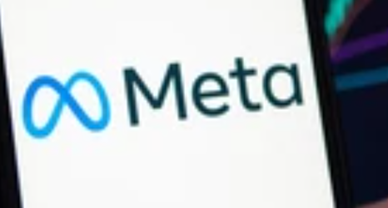Influencers Under Watch: How the IIGC Is Reshaping Digital Ethics
On 15th February 2025, the India Influencer Governing Council (IIGC) was established as a self-regulatory authority for influencer marketing. It’s main objective and goal is to empower creators, consumers and brands. The IIGC introduced “ Code of standards[1]” for influencers with an aim to protect consumers from harmful and misleading content and promote fairness and transparency in influencer marketing.
The open nature of content creations on social media platforms like YouTube, Instagram and Facebook, allows anyone with internet access to produce and share content without any formal eligibility criteria. This trend has sparked a significant rise in user-generated content. Influencers are leveraging these platforms not only to create content but also to market the products to their large audience, primarily youngsters – audiences that traditional advertising often struggle to reach. On these platforms, the content creators typically do not need to spend any money to promote products. Many influencers are also launching their own startups and using their own content to market their own products. However, there is currently no regulatory authority to monitor the nature of this content. In order to tackle these problems, The IIGC has introduced a framework of guidelines for influencer marketing to build a better digital ecosystem.
SECTION – 1 “KEY PERFORMANCE INDICATORS”
The “Key Performance Indicators” will be used as a measurement tool to evaluate the content impact and effectiveness under “Section 1” of Code of Standards. It prohibits fake metrics such as buying followers and avoids exaggerating reach. It provides guidelines for using platform verified metrics by disclosing the use of paid promotions and avoiding over-reliance on vanity metrics. Brands may verify metrics for authenticity and any manipulation can lead to demonetization, blacklisting by brands. Therefore, influencers must adhere to these guidelines by prioritizing accuracy and transparency to maintain credibility with consumers and brands.
SECTION – 2 “PAID PARTNERSHIP DISCLOSURES”
“Paid Partnership Disclosure” means that an influencer must clearly disclose any material connection with a brand under “Section 2” of Code of Standards. This includes monetary payments for endorsements and promotions, receipt of free products, services, or experiences, and long-term sponsorships or partnerships. Such disclosures must be made using primary labels in all forms of content, including static posts, stories, or videos on platforms like Instagram, Snapchat, and YouTube.
SECTION – 3 “ADMIRATION DISCLOSURE”
Section 3 of the Code of Standards stipulates the requirement of “Admiration Disclosure” is applicable when an influencer shares content that they personally admire or value for a brand, goods and services by using a product in their daily routine or highlighting its quality, mission, or values without any formal agreement. This may still amount to an endorsement. In such cases, even if there is no material connection, influencers are encouraged to use consistent and clearly identifiable labels to distinguish such organic endorsements from paid promotions. This helps maintain transparency by not misleading the audience.
SECTION – 4 “AI INFLUENCERS”
“AI Influencers” are virtual personas generated using artificial intelligence. Blurring the lines between fiction and influence, they have been revolutionizing social media, attracting massive audiences, and collaborating with leading brands. These virtual personas are taking social media transforming industries like fashion, technology, and lifestyle.
The rise of AI-generated influencers introduces new ethical and transparency concerns.
AI influencers must not mislead audiences by simulating genuine human emotions or experiences. They should avoid reinforcing harmful biases and ensure fair representation of diverse communities. Use of unethical data practices, surveillance, or deceptive deepfake technology is prohibited. Advertising must remain authentic, without falsely implying personal product use.
AI influencers must adhere to the same standards as human influencers while ensuring clear disclosure of their non-human nature with visible disclaimer to the audience. AI Influencers must not mimic likeliness, voice of real individuals whether living or dead without explicit legal permission or including the Deepfake use for such resemblance of celebrity or influencer attracts penalties. They must not deceive consumers into any emotional or financial relationships under their virtual presence. AI Content should avoid spreading any political propaganda.
SECTION – 6 “DEFLUENCE”
“Difluence” has emerged as a tremendous phenomenon in clout culture, where an influencer publicly criticizes or speaks negatively about a brand, product, or service which significantly impacts consumer preference and brand reputation.
The Zydus Wellness Products Ltd v. Prashant Desai[2] case is a textbook example of the risks posed by Difluence—when influencer content causes measurable harm to a brand’s image or consumer trust. In this instance, Prashant Desai, a health-focused influencer, posted a viral Instagram video telling parents to avoid giving products like COMPLAN, Bournvita, and Horlicks to their children. The video, with over 349 million views, claimed the products contained dangerously high sugar levels, without substantiating those claims or disclosing credible qualifications. This is a classic case where unchecked digital influence triggered potential reputational and financial damage to a long-established brand, illustrating how influencer speech, when not backed by expertise, can have difluent consequences in the digital marketplace.
According to Section 6 of (COS), Influencers have the right to express honest opinions, their criticism must be ethical, factual, and constructive, by avoiding misinformation, defamation, or malicious intent. By following these guidelines, influencers can provide valuable feedback while fostering trust and fairness.

Prohibited difluence practices include clickbait, inciting public backlash, or selective editing. Encouraging followers to boycott a brand without evidence, such as urging mass reporting over a single negative experience, is also banned. Selective editing, like cropping a brand’s response to make it seem dismissive, misleads audiences. Targeted hate, such as attacking a brand’s employees with discriminatory remarks, is strictly prohibited. If an influencer claims a product is substandard, they should provide proof, like photos of a damaged item or third-party lab results. Engaging with the brand privately first, such as emailing about a faulty appliance, can resolve issues amicably.
SECTION – 11 “SEXUAL CONTENT AND NUDITY”
The case of Piper Rockelle’s YouTube channel, managed by her mother, Tiffany Smith, highlights how YouTube videos can violate Section 11 guidelines on sexual content and nudity. In 2022, a lawsuit by 11 former child members of “the Squad” alleged Smith made sexually explicit comments and encouraged provocative behavior on camera, such as instructing minors to “make it sexy” to appeal to adult male viewers, who reportedly comprised 92% of the audience. One disturbing claim involved Smith mailing Rockelle’s underwear, stating “old men like to smell it.” These actions, if true, represent unsolicited sexualization and exploitation of minors, breaching ethical standards for age-appropriate content and personal boundaries.
As per Section 11 of (COS), there is strict prohibition against Inappropriate content, including sexually explicit material, objectification, unsolicited sexualization, non-contextual nudity, or misinformation about sexual health, to maintain community trust and safety. Influencers are urged to ensure their content is age-appropriate, clearly labeled, and restricted for minors when necessary, while maintaining contextual sensitivity in discussions about sexual health, relationships, or LGBTQ+ rights. If there is any non-consensual sharing of explicit content, child exploitation, or violation of obscenity laws can attract legal prosecution. Contents related to sex, sexuality, and nudity must be handled with responsibility and sensitivity. Such content is permitted only when presented appropriately in educational, artistic, or health-related contexts.
SECTION – 16 “ CHILD SAFETY CONTENT”
As parents become increasingly occupied with their daily routines, YouTube often serves as a digital babysitter and a source of relaxation for them. It has evolved into a dominant force in children’s entertainment, effectively replacing traditional children’s television. YouTube is now actively shaping the behavior of the children who regularly engage with its content.
The case of a disturbing YouTube Kids video watched by 3-year-old Isaac Burns[3] exemplifies violations of child-oriented content guidelines. On the YouTube Kids app, intended for safe, child-friendly content, Isaac encountered a 10-minute knockoff video titled “PAW Patrol Babies Pretend to Die Suicide by Annabelle Hypnotized.” The clip featured crude imitations of the popular “PAW Patrol” characters engaging in violent and frightening scenes, including car crashes, deaths, and a character walking off a roof after being hypnotized by a demonic doll. Such content, with its violence, fear-inducing themes, and inappropriate portrayal of death, directly contravenes Section 11 guidelines prohibiting harmful themes, unsafe behavior, and content that could traumatize young viewers. This incident highlights the failure to filter harmful material on platforms meant to protect children, eroding parental trust and underscoring the need for stricter content moderation to ensure safe, age-appropriate viewing experiences.
Influencers creating content for children, who are a highly receptive and vulnerable audience, bear a huge responsibility to ensure their work is safe, ethical, and developmentally appropriate, avoiding any exploitation of young viewers’ sensitivities. The sexualization of children through suggestive or exploitative portrayals, profanity, crude humor, or mature themes is forbidden to protect young audiences from inappropriate exposure. Content must also steer clear of glorifying unhealthy lifestyles, such as promoting excessive junk food or extreme diets, and encouraging unsafe behaviors like risky challenges or dares, which could endanger children’s health or prompt dangerous imitation, ensuring a positive and secure viewing experience.
Children market is always appealing to marketers and with enormous increase in online media consumption. A tragic example is the case of a nine-year-old girl who fatally attempted to emulate a stunt by the TV character Shaktimaan, influenced by celebrity-endorsed ads glorifying risky behaviors.
Guidelines explicitly prohibit manipulative advertising tactics, such as phrases like “buy now” or “hurry before it’s gone,” which pressure children into making purchasing decisions they may not fully understand. Similarly, promoting adult-oriented products like alcohol, gambling, smoking, or weight loss services in content accessible to children is strictly forbidden, as these can expose young viewers to inappropriate influences. For instance, a YouTube video featuring a popular kids’ character subtly promoting a weight loss product would violate these rules, potentially misleading children and eroding parental trust.
Additionally, transparency is critical in child-directed content. All sponsorships, affiliate links, or brand promotions must be disclosed in clear, child-friendly language to avoid deceptive product placement, ensuring young viewers understand when content is promotional. Content creators must also refrain from exploiting children’s emotions to drive likes, subscriptions, or shares, as such manipulation can foster unhealthy engagement. Encouraging excessive screen time, which could harm children’s well-being, is equally prohibited. These standards aim to maintain a positive, trustworthy space for kids, as highlighted by ongoing concerns in cases like the 2017 YouTube Kids incident, where inappropriate content slipped through, underscoring the need for vigilant moderation and ethical practices.
The use of children in online content creation, particularly on platforms like YouTube, demands rigorous ethical standards to safeguard their well-being and privacy, as outlined in child-oriented content guidelines. Influencers must obtain documented parental or guardian consent before featuring minors, ensuring that the child’s welfare is prioritized throughout the production process. This requirement aligns with laws like the Children’s Online Privacy Protection Act (COPPA) in the U.S. and India’s child rights laws, which mandate protections against exploitation.
Forcing minors to act, speak, or behave in ways that are inauthentic or uncomfortable can lead to distress and long-term harm, violating their autonomy and well-being. The Piper Rockelle case further exemplifies this issue, with former Squad members alleging they were coerced into performing suggestive content to boost views, such as being told to “make it sexy” for adult audiences. Monetizing children’s private lives by sharing personal details, such as their school, home, or daily activities, is strictly prohibited to protect them from online risks, including doxxing and predation.
SECTION – 17 “FINANCE AND COMPLIANCE”
Amid rising concerns over unregulated finfluencers providing biased or misleading advice, often driven by commission-based models, their significant influence on followers’ financial decisions has prompted regulatory action. To address these risks, the guidelines under Section 17 gives a framework to ensure accountability and responsibility in the advice they offer. Finfluencers must refrain from offering unlicensed financial advisory services, such as financial planning or investment recommendations, unless they are certified professionals.
Finfluencers must avoid making unrealistic promises, such as guaranteed profits or risk-free investments, which can mislead followers into poor financial choices. Similarly, promoting get-rich-quick schemes, including multi-level marketing (MLM) or pyramid schemes, is strictly prohibited, as these often exploit vulnerable audiences with false promises of easy wealth. By curbing such practices, regulators aim to protect consumers from financial harm.
Finfluencers are also required to provide accurate and responsible information about banking, loans, and credit. Misleading claims about loan eligibility, credit benefits, or financial institution policies can lead to significant financial consequences for followers. Additionally, content that glorifies reckless spending, excessive debt, or financial irresponsibility is unacceptable, as it undermines sound financial habits. When promoting investment products like stocks, mutual funds, cryptocurrencies, or trading platforms, influencers must clearly disclose market risks through disclaimers to ensure transparency and informed decision-making.
False endorsements, such as claiming personal use of a product or service they haven’t tried, are prohibited to prevent deceptive marketing. Furthermore, influencers must avoid manipulative referral marketing tactics, such as pressuring followers to sign up for financial affiliate programs like stock trading apps or crypto exchanges, and clearly label such promotions to avoid confusion.
To maintain credibility, finfluencers must adhere to ethical guidelines that prioritize financial literacy and responsibility. They should educate their audience about financial risks, savings, investments, and responsible money management, fostering informed decision-making. All financial claims, statistics, or advice must be backed by verified data from reputable sources to ensure accuracy. Influencers should also distinguish between personal opinions and expert advice, clarifying when their content is not certified financial guidance to avoid misleading followers.
SECTION -20 “CONSUMER COMPLAINT FORUM”
The IIGC dedicated Consumer Complaint Forum to handle disputes arising from influencer content by ensuring that consumers have a structured avenue to voice concerns about misleading, unethical, or harmful financial advice disseminated by influencers, whether the content is sponsored or non-sponsored.Any consumer who believes they have been misled or harmed by an influencer’s financial content—be it related to products, services, or general advice—can submit a complaint to the IIGC. This includes grievances about exaggerated claims, undisclosed sponsorships, or irresponsible financial recommendations that may lead to financial loss or confusion. Upon receiving a complaint, the IIGC initiates a thorough review process to assess the validity of the claims. The Council examines the content in question, cross-referencing it with the influencer’s adherence to the Code of Standards. Once the review is complete, the IIGC issues a verdict based on its findings. Verdicts may range from warnings or content removal requests to more severe penalties, such as temporary suspensions or recommendations for legal action, depending on the severity of the violation.
IIGC has introduced a much-needed and robust framework through its “Code of Standards” effectively addressing the unregulated landscape of influencer marketing. These measures tackle critical issues such as misinformation, deceptive practices, and inappropriate content, ensuring a safer digital ecosystem for creators, brands, and audiences. Parliament should now take the next step and turn these guidelines into law, providing a legal backbone for implementation. However, challenges persist, particularly with YouTube advertisements promoting unverified products or services. These ads often attract consumers with exaggerated claims and unverified sources, slipping through without adequate checks. To strengthen its framework, the IIGC must extend its regulatory oversight to scrutinize such advertisements, ensuring they meet the same standards of authenticity and transparency applied to influencer content.
Author:–Ashwasti Shravani, in case of any queries please contact/write back to us at support@ipandlegalfilings.com or IP & Legal Filing.
[1] https://iigc.org/code-of-standards/influencers/code-of-standards-v1-april.pdf
[2] CS(COMM) 684/2024
[3]nytimes.com/2017/11/04/business/media/youtube-kids-paw-patrol.html


